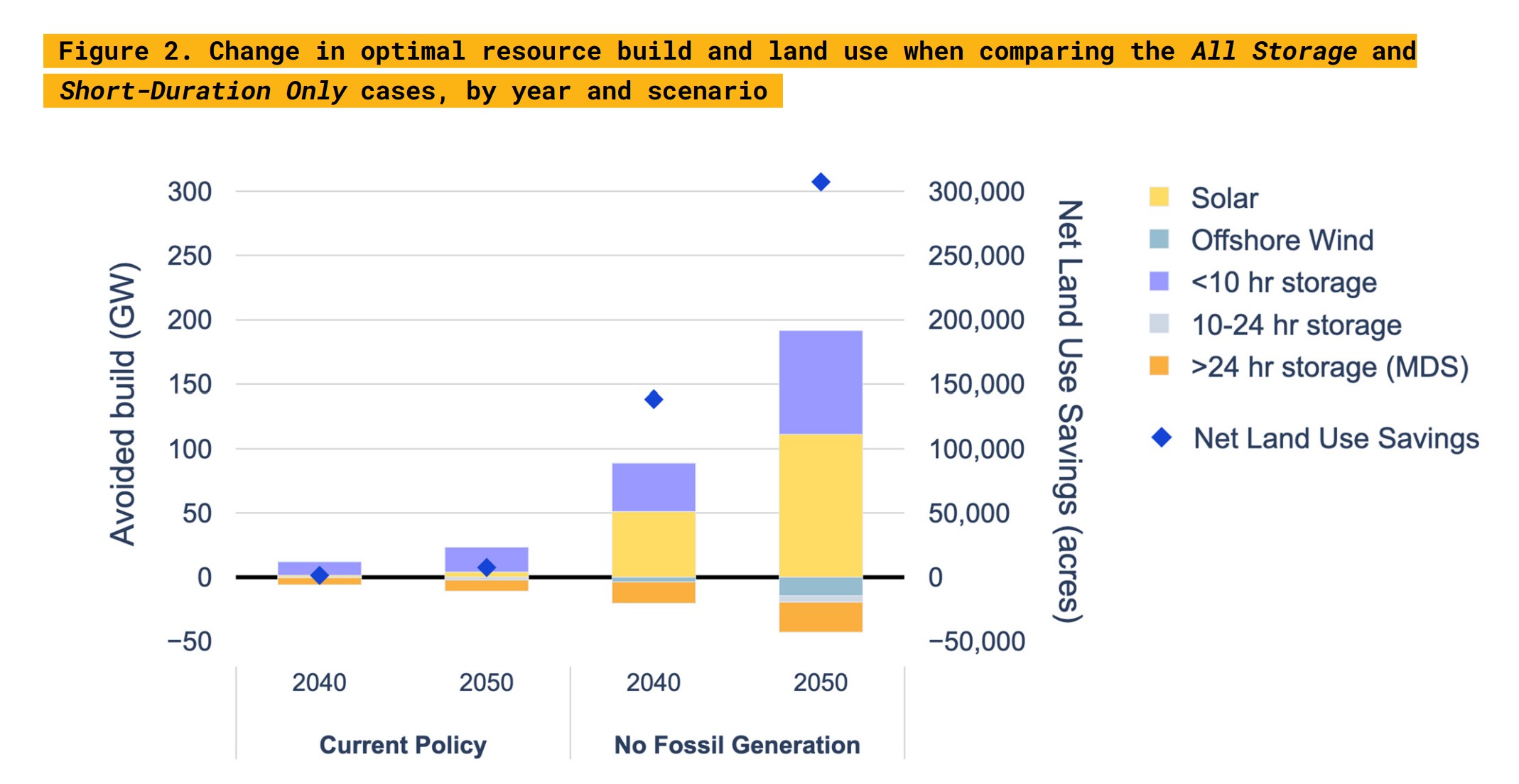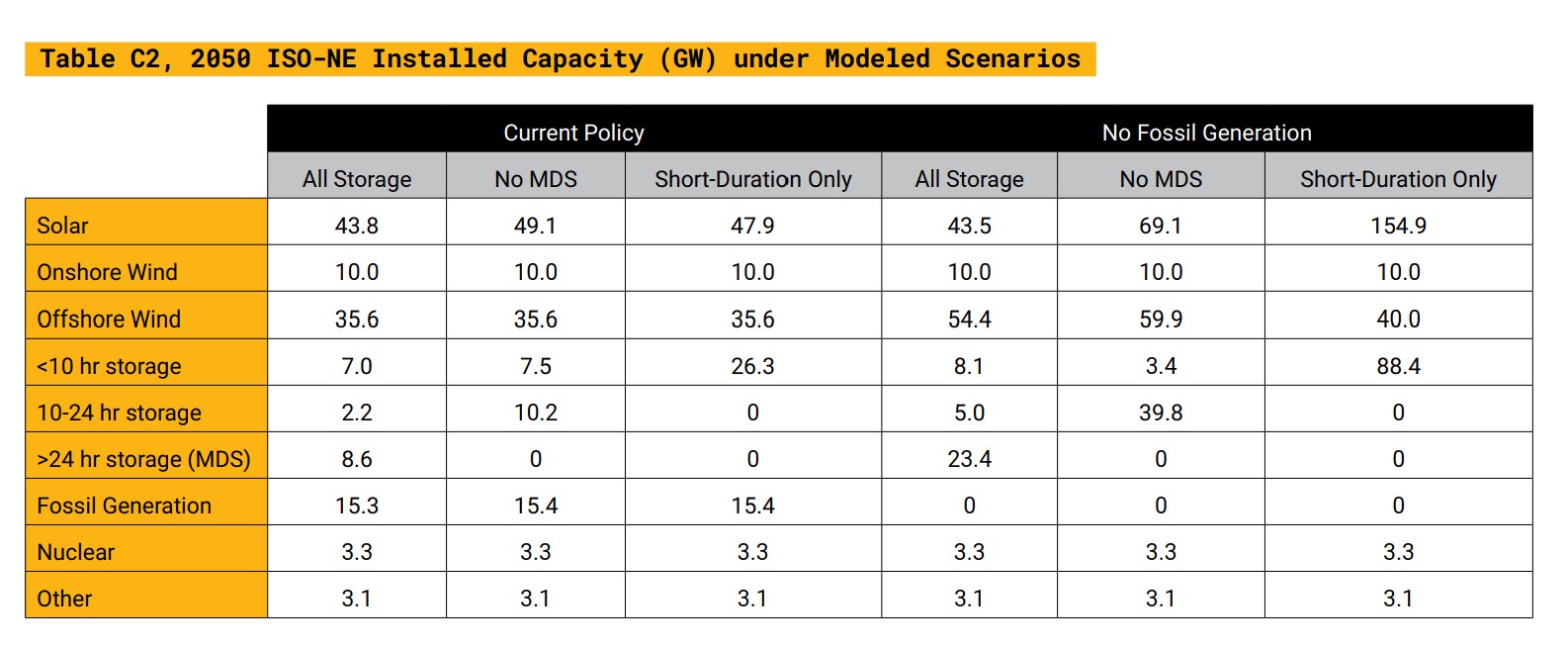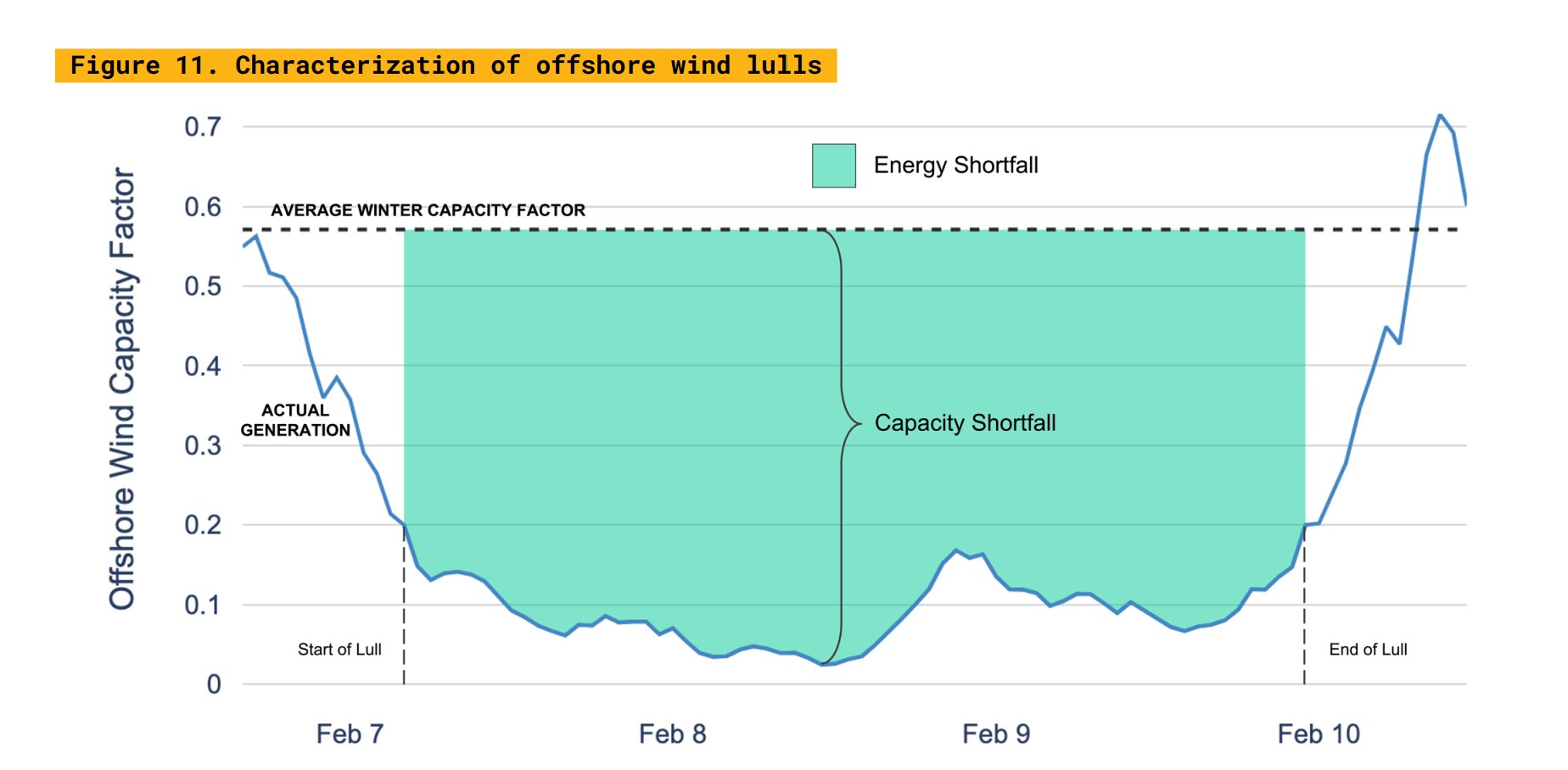Form Energy, a manufacturer of a 100-hour iron-air battery, believes that if New England adopts a ‘fossil-free by 2050’ policy, their energy storage system could replace a massive 111.4 GW of solar capacity and circumvent the need for 80.3 GW of less than 10-hour lithium-ion energy storage. The company further contends that its batteries are well-suited to address the decreased productivity of offshore wind during winter lulls, effectively adding 14.4 GW of offshore wind capacity and helping phase out 15.4 GW of fossil fuel dependence.
The product is touted for its cost benefits, delivering capacity at an approximate $20/kWh – a stark contrast to the $176/kWh of a 6-hour lithium-ion solution (one of many storage products the document modeled). This value proposition is detailed in their recent white paper, “Clean, Reliable, Affordable: The Value of Multi-Day Storage in New England.”

According to Form Energy’s modeling, by harnessing solar energy more judiciously, New England could realize savings of around $115 billion. An additional $80 billion in savings is projected on the lithium-ion storage front, totaling an estimated $190 billion.
As New England contemplates a transition to a ‘fossil-free by 2050’ framework, the elimination of fossil fuels would pivot their energy dependence to renewables. Current cost modeling suggests that overbuilding renewables and curtailing as needed is more affordable than installing standard 4 and 6-hour lithium-ion backups when it comes to covering the three day winter time wind power lulls that must be considered.
By design, overbuilding renewables results in significant curtailment. In the heavily oversized model, a mere 79% of New England’s offshore wind and 43% of its solar potential are exploited. With Form Energy’s approach, these figures could catapult to 95% and 84% respectively, slashing curtailment by 83%.
While roughly $190 billion in hardware is saved, the system requires the installation of $92 billion of other equipment – including Form Energy’s own technology. The expansion of offshore wind facilities would require an added $29.1 billion (at $2,021/kW), medium-range storage is estimated at $16.1 billion (at $3,232 per kW), and Form Energy’s 23.4 GW/2.34 TWh setup would cost around $46.8 billion (at $2,150 per kW).
It’s worth noting that although Form Energy’s product does greatly increase system efficiency, its round-trip efficiency is under 50%, in contrast to lithium-ion’s 85%.

Factoring in these expenses, net hardware savings hover around the $100 billion mark. Moreover, the company notes that offsetting 111 GW of solar could conserve nearly 300,000 acres of New England’s land.
On the other hand, the Massachusetts Department of Energy Resources suggests that the energy produced by those 300,000 acres of solar could be matched in capacity by the deployment of as much as 152 GW of “highly suitable” rooftop solar in Massachusetts alone.
Beyond the $100 billion in projected savings, a crucial takeaway is Form Energy’s adherence to a “No Fossil Fuel” system. Presently, New England is without a unified regional policy, with only some progressive states like Massachusetts targeting a “Net Zero” status by 2050.
A prevailing concern for New England’s wind energy is its unpredictability. Despite offshore wind resources in New England demonstrating an impressive winter capacity factor of 60%, there are stretches with virtually zero production, sometimes lasting several days.

To address this, Form Energy analyzed two decades of offshore wind data from ISO New England, the regional power grid manager. The data suggests that pairing every MW of offshore wind with 0.56 MW and 30-34 MWh of energy storage would capably handle offshore wind interruptions, even those at the 90th to 95th severity percentile.
Numerous energy storage alternatives could fit this bill, but Form Energy’s solution stands out. It’s projected to be nearly 80% more affordable than lithium-ion counterparts, carries a minimal fire risk, and boasts over double the longevity, making it an attractive proposition for the region’s energy future.
This content is protected by copyright and may not be reused. If you want to cooperate with us and would like to reuse some of our content, please contact: editors@pv-magazine.com.









By submitting this form you agree to pv magazine using your data for the purposes of publishing your comment.
Your personal data will only be disclosed or otherwise transmitted to third parties for the purposes of spam filtering or if this is necessary for technical maintenance of the website. Any other transfer to third parties will not take place unless this is justified on the basis of applicable data protection regulations or if pv magazine is legally obliged to do so.
You may revoke this consent at any time with effect for the future, in which case your personal data will be deleted immediately. Otherwise, your data will be deleted if pv magazine has processed your request or the purpose of data storage is fulfilled.
Further information on data privacy can be found in our Data Protection Policy.